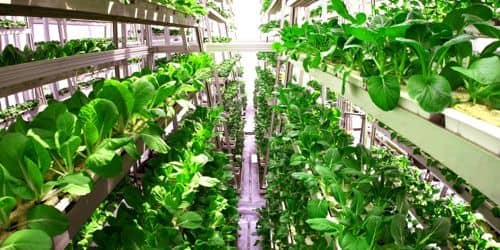Building-integrated agriculture (BIA)
Urbanization is transforming human societies in many ways. Besides bringing benefits to people in cities, it also has negative impacts such as food security. Building-integrated agriculture (BIA) is the practice of locating high-performance hydroponic greenhouse farming systems on and in mixed-use buildings to exploit synergies between the built environment and agriculture. One way to meet the challenge is urban agriculture; however, traditional agricultural practices are not suitable within urban areas due to the limited availability of land. Therefore, the alternative option is to grow crops inside or on top of buildings, e.g. building integrated agriculture (BIA).
Building-integrated agriculture is the practice of locating high-performance hydroponic greenhouse farming systems on and in mixed-use buildings to exploit synergies between the built environment and agriculture.
Rooftops or basements are often overlooked spaces in which we can grow food and actually make both the building and the farm more efficient. Typical characteristics of BIA installations include – recirculating hydroponics, waste heat captured from a building’s heating-ventilation-air condition system (HVAC), solar photovoltaics or other forms of renewable energy, rainwater catchment systems, and evaporative cooling. BIA is not only about producing food, as many of the warehouse farms that we see developing around the world. The farmer has to adjust his management measures concerning variety selection, crop rotation, cultivation technology, plant nutrition, and plant protection to the natural environment.

The earliest example of BIA may have been the Hanging Gardens of Babylon around 600 BC. Integrating farming into the built environment has the potential to significantly reduce fossil fuel consumption, improve urban ecology, enhance food safety and security, enrich the lives of city dwellers, and conserve building energy. Modern examples include Eli Zabar’s Vinegar Factory Greenhouse, Gotham Greens, Dongtan, Masdar City, and Lufa Farms. Rooftop Greenhouse (RG) farming is an expanding form of BIA in developed countries where urban land is expensive, rooftops represent a considerable unutilized area, and Controlled-Environment Agriculture (CEA) technologies allow for year-round cultivation of any horticultural crop independently of local climatic conditions.
Integrated farming comprises cropping methods and other agricultural production techniques that fulfill both ecological and economic demands. Integrating farms in cities is not just a matter of building farms in empty spaces, but finding appropriate technologies for the specific farm, and establishing a network of relations with the rest of the city organisms, so there is a healthy flow of resources and the whole ecosystem becomes more sustainable. The term building-integrated agriculture was coined by Ted Caplow in a paper delivered at the 2007 Passive and Low Energy Cooling Conference in Crete, Greece.




